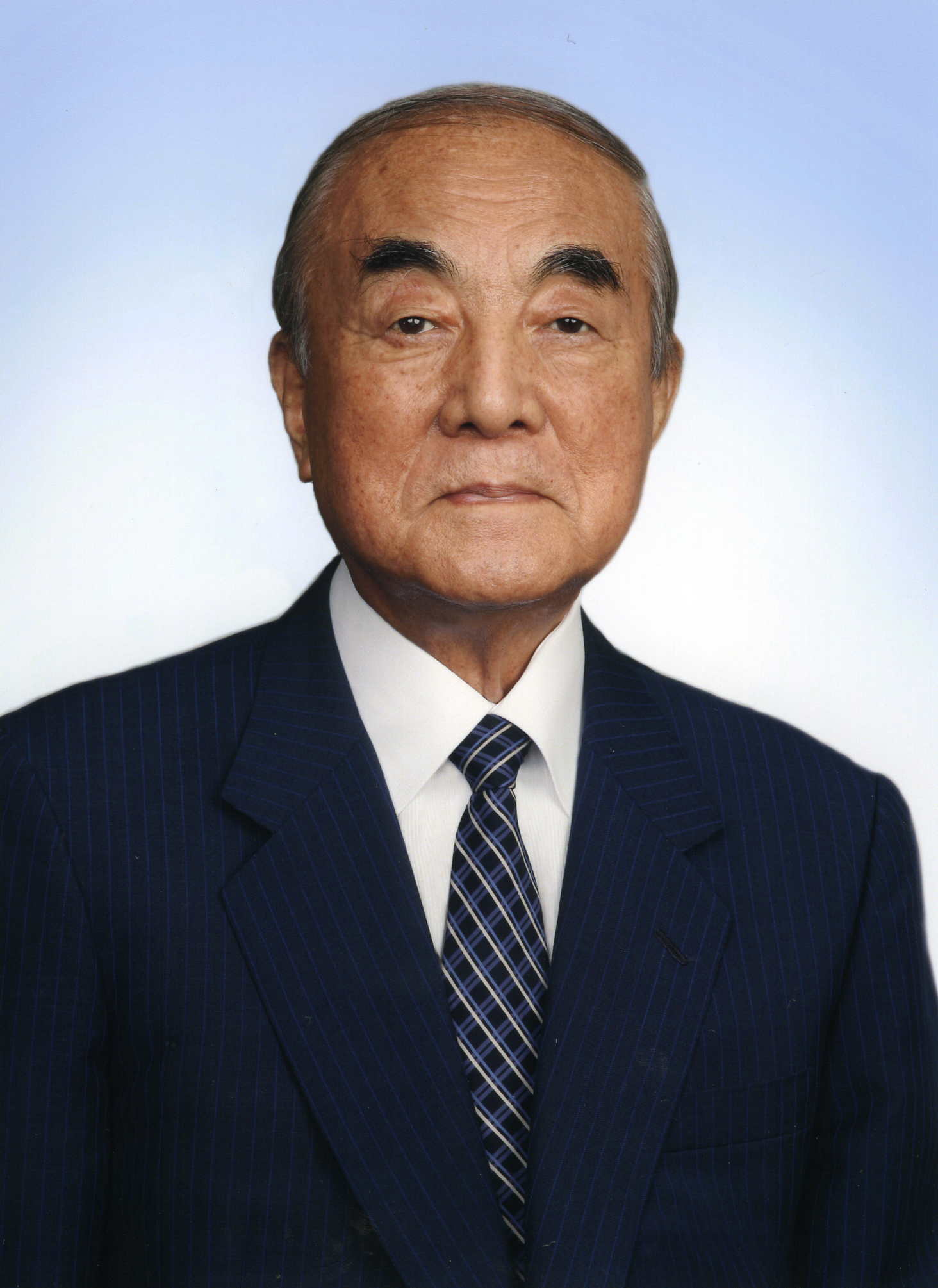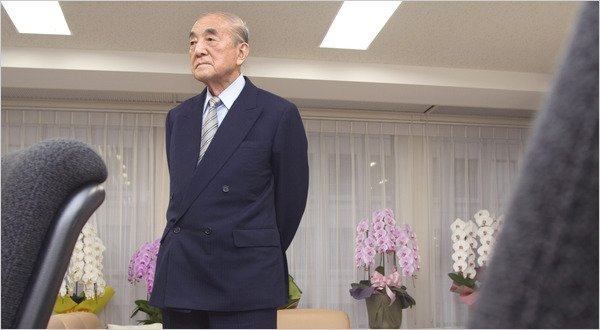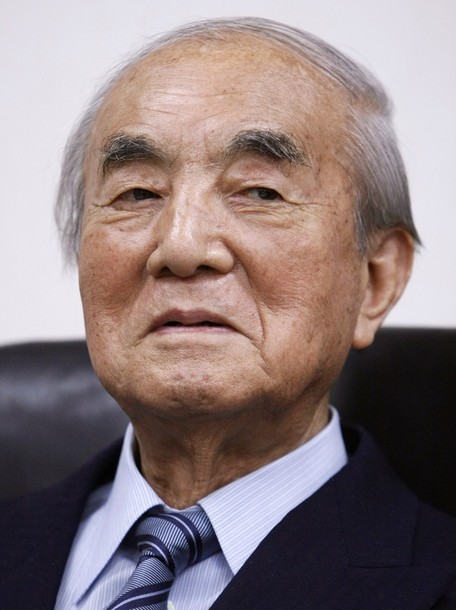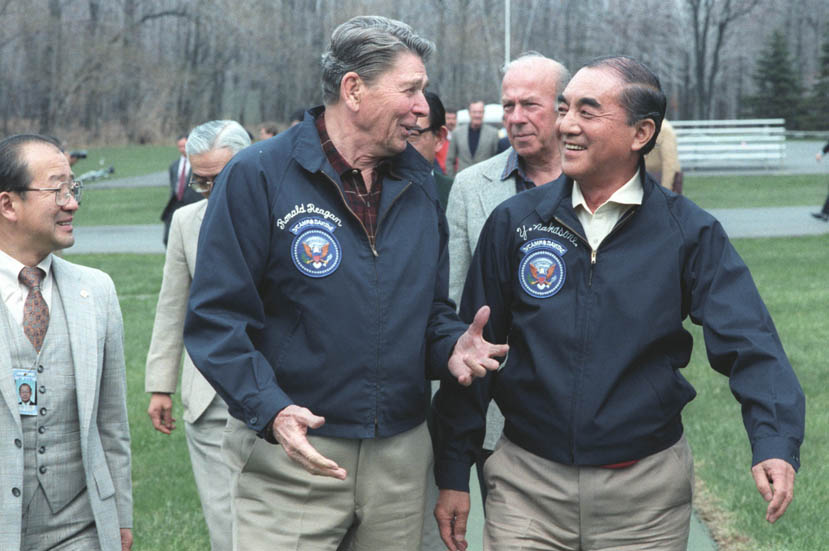<Back to Index>
- Mathematician Herbert Karl Johannes Seifert, 1907
- Writer Louis Ferdinand Céline (Destouches), 1894
- Prime Minister of Japan Yasuhiro Nakasone, 1918
PAGE SPONSOR


Yasuhiro Nakasone (中曽根 康弘 Nakasone Yasuhiro, born 27 May 1918) is a Japanese politician who served as Prime Minister of Japan from November 27, 1982 to November 6, 1987. A contemporary of Brian Mulroney, Ronald Reagan, Helmut Kohl, François Mitterrand, Margaret Thatcher, and Mikhail Gorbachev, he is best known for pushing through the privatization of state - owned companies, and for helping to revitalize Japanese nationalism during and after his term as prime minister.
Nakasone was born in Takasaki, in Gunma, a poor mountainous prefecture where his father was a lumber dealer. He attended Tokyo Imperial University. During World War II, he was a commissioned officer and paymaster in the Imperial Japanese Navy.
In
1947, he gave up a promising career in an elite government ministry to
run for Parliament with the belief that in its postwar remorse, Japan
was in danger of discarding its traditional values, according to a 2010
profile. He entered the Diet of Japan as a member of the House of Representatives for the Democratic Party. "As a freshman lawmaker in 1951, he delivered a 28 page letter to General MacArthur criticizing
the occupation, a brazen move. The general angrily threw the letter in
the wastebasket, Mr. Nakasone was later told. This stand established
[Nakasone's] credentials as a right - wing politician." He gained brief notoriety in 1952 for blaming Emperor Hirohito for
Japan's defeat in the war. In 1955, at Nakasone's urging, the
government granted the equivalent of 14 million dollars to the Agency
for Industrial Science and Technology to begin nuclear power research. Nakasone rose through the LDP's ranks, becoming Minister of Science in 1959 under the government of Nobusuke Kishi, then Minister of Transport in 1967, head of the Agency of Defense in 1970, Minister of International Trade and Industry in 1972 and Minister of Administration in 1981.
In 1982, Nakasone became Prime Minister. Along with Minister of Foreign Affairs Shintaro Abe, Nakasone improved Japan's relations with the USSR and the People's Republic of China. Nakasone was best known for his close relationship with U.S. President Ronald Reagan, popularly called the "Ron - Yasu" friendship. He also visited President Corazon Aquino in a series of talks between the Philippines and Japan during a special state visit from 1986 to 1987, to provide good economic and trade relations, massive investor and tourist arrivals, and construction and rehabilitation programs. In domestic policy, Nakasone's most notable policy was his privatization initiative, which led to the breakup of Japan National Railways into the modern Japan Railways Group.
Nakasone also became known for having a nationalist attitude. He twice visited Yasukuni Shrine,
after the controversial decision to enshrine 14 Class A war criminals
was made in 1978. During his last term in office, he also gained
notoriety among the various non - Japanese ethnic groups in Japan
(particularly the sizeable Korean minority) for proclaiming that Japan's success was because it did not have ethnic minorities,
like the US. He then clarified his comments, stating that he meant to
congratulate the US on its economic success despite the presence of
"problematic" minorities. Due to this issue, Masayuki Fujio, the Minister of Education, had to resign in 1986.
Nakasone was replaced by Noboru Takeshita in 1987, and was implicated, along with other LDP lawmakers, in the Recruit scandal that broke the following year.
Although he remained in the Diet for another decade and a half, his influence gradually waned. In 2003, despite a fight, Nakasone was not given a place on the LDP's electoral list as the party introduced an age limit of 73 years for candidates in the proportional representation blocks. This ended his career as a member of the Diet. The move was widely seen as a blunt and effective attack by Junichiro Koizumi on the old guard LDP leadership.
Nakasone's son, Hirofumi Nakasone, is also a member of the Diet; he served in the cabinet of Keizō Obuchi as Minister of Education and was Minister of Foreign Affairs in the cabinet of Taro Aso.
In
early 2010, "aware of his status as one of the few leaders revered
across Japan’s suddenly fractured political landscape" and the
country's "most revered elder statesman," Nakasone launched a series of
interviews to address the direction of prime minister Yukio Hatoyama's
government. In a profile at that time, Hatoyama's "inexperienced
left - leaning" government was seen as "challenging Japan’s postwar
political order and its close relationship with the United States." As
well, the LDP was "crumbling into disarray" in the wake of Hatoyama's
victory. In the profile, Nakasone described the moment "as a national
opening on par with the wrenching social and political changes that
followed defeat in the [world] war [and] praised the appearance of a
strong second political party as
a step toward true democracy. "'Being knocked out of power is a good
chance to study in the cram school of public opinion,'" he was quoted
as saying of the LDP. He "faulted Mr. Hatoyama for giving Washington the impression that [Hatoyama] valued ties with China more
than he did those with the United States. 'Because of the prime
minister’s imprudent remarks, the current situation calls for Japan to
make efforts to improve things,' he said. The [Japanese] relationship
with the United States is different from that with China, he said,
because 'it is built on a security alliance, and not just on the
alliance, but on the shared values of liberal democracy, and on its
shared ideals.'" And relative to another high - profile current source of
friction between Japan and the United States, Nakasone said "'Problems
like Okinawa [and the American military base there] can be solved by talking together.'"

